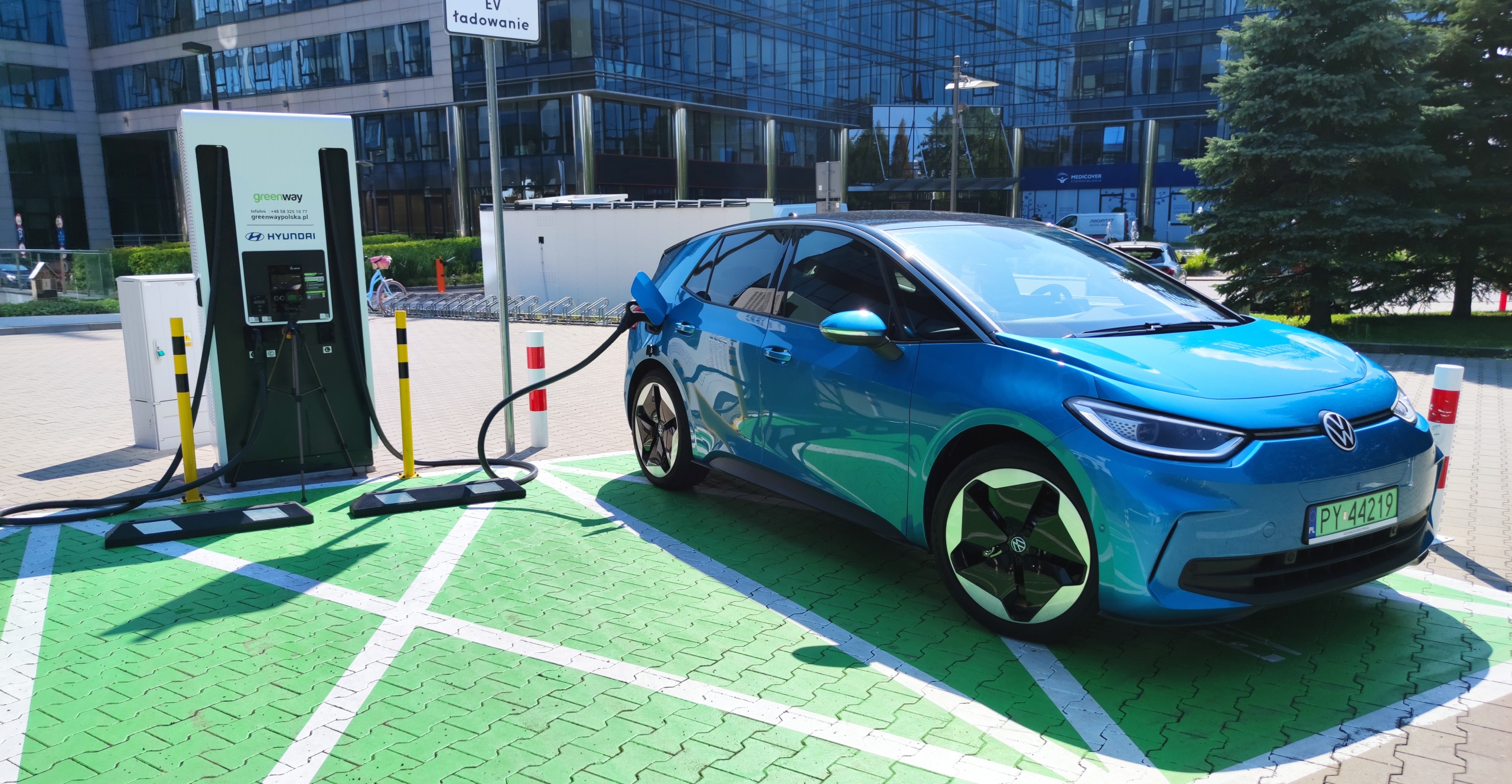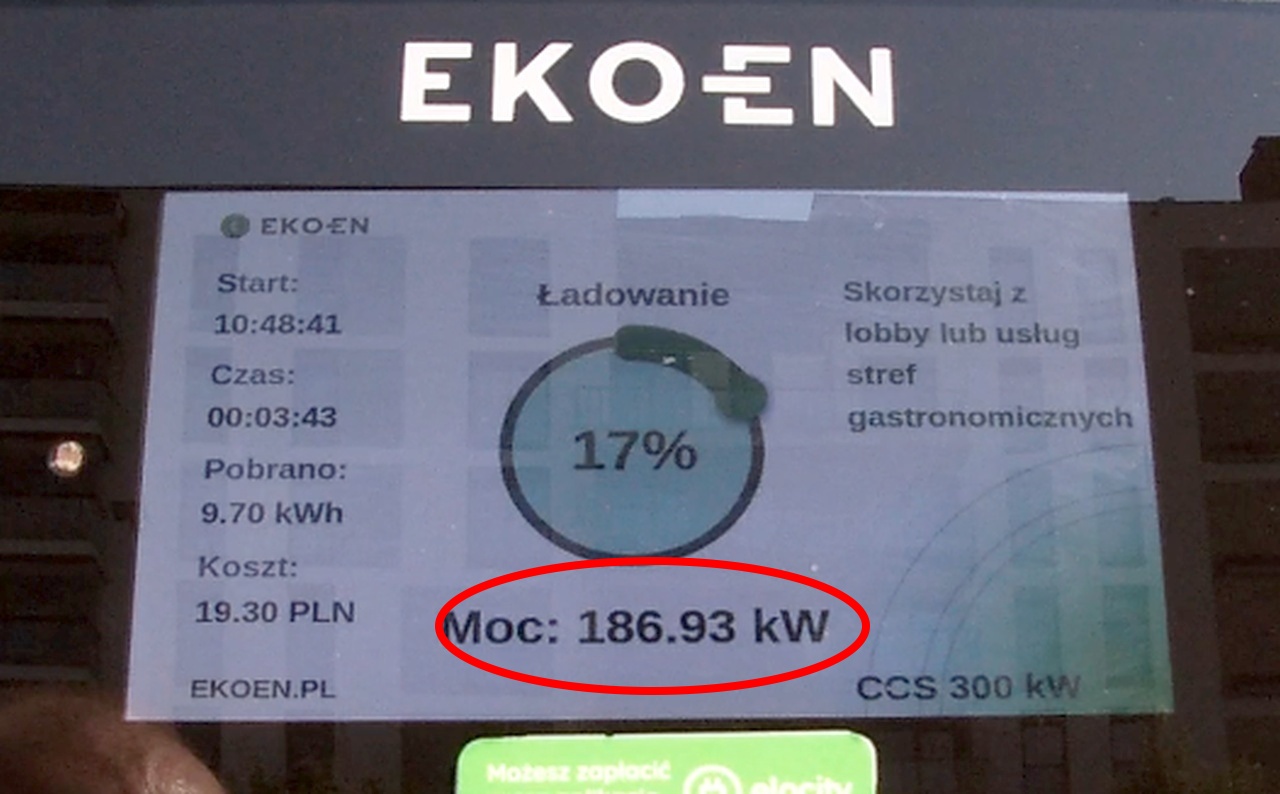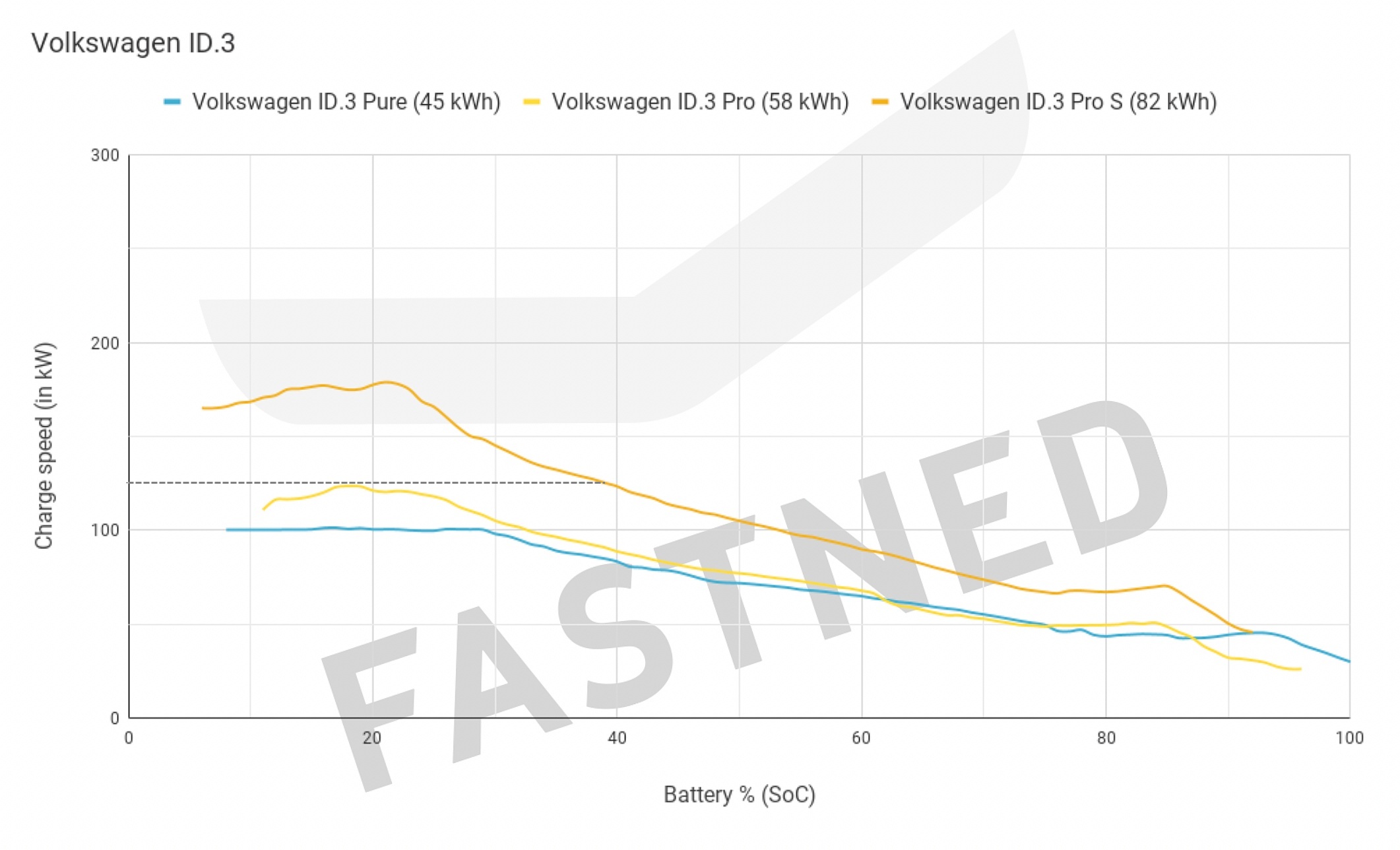Thanks to the courtesy of the Volkswagen division, we had the opportunity to test the 2024 VW ID.3 Pro S, a variant with four seats (unfortunately) but with an 82 (77) kWh battery. It turned out that, although this is a civilian, non-sporting version of the model, it charges at a peak of more than 186 kW with a manufacturer’s declaration of 175 kW. Initially, we thought that only the VW ID.4 GTX, VW ID.5 GTX and VW ID had equally good maximums. Buzz, but our readers led us astray.
Power and charging curve of the facelifted VW ID.3 Pro S
As we mentioned, at peak we were able to push it to 186.93 kW, which was a dream with the previous battery generation. When the VW ID.3 Pro S made its debut, the maximum charging power was 125 kW, taking into account losses and the additional load generated by equipment (e.g. the air conditioning compressor) it might have been possible to reach around 130-135 kW, but we do not associate anyone who boasted a result better than 126 kW.
Unfortunately, the Ekoen charger did not want to charge this car to the end, it was interrupting the process for unexplained reasons. On the other hand with Ionity we had a [previous] problem with payments. We therefore reached out to Fastned data (source). It turns out that the facelifted Volkswagen ID.3 Pro S charges faster than the previous generation up to thirty-odd per cent of the battery, just over a third of the range. In other words: on an ultra-fast charging station more than a third of the range is regained a few minutes faster than with the previous generation (the dashed line indicates the 125 kW limit):
The VW ID.3 Pro S we tested charged at a higher power than the Fastned curve would suggest. At 31 per cent, we still had more than 150 kW, but, as we mentioned, this could have been the result of losses and markup from the compressor that cooled the cells.
If we are driving the facelifted VW ID.3 Pro S on time and need to recharge – which is not at all obvious, as the car has a range of more than 400 kilometres – the fastest way to reach our destination is by discharging the battery to less than 10 per cent and then connecting to a charging station that supports amperages of up to 500 amps. We are talking about one that, with a 400-volt architecture, promises charging powers of 200 kW.
To recap: when driving on time, charge up to 30, maximum 40 per cent, as long as the charger accelerates to 140+ kW.

The test on the “200 kW charger” did not make much sense, since instead of 130+ kW we were struggling to reach around 110 kW
A note from the editors: there are many indications that the same Li-ion cells will end up in the Ford Explorer EV. Slightly surprisingly, achieving such high charging powers with the VW ID.4 or ID.5 required the purchase of the more expensive GTX version, as the non-GTX variants sped up to a maximum of 135 kW. Only the refreshed VW ID.4/ID.5 GTX declares 175 kW.
Note 2: usability on the road is a function of maximum charging power, charging curve AND energy consumption. We will return to this topic 🙂
Note 3: our Readers have shared some fantastic information with us. It seems that all VW ID.3 Pro S and Cupras Born 82 (77) kWh were fitted with batteries from larger GTX models in 2023 and supporting charging powers of up to 175 kW nominally.

